Lecture Review | Curiosity, Experience, and the Thirst for Knowledge Make People Fall in Love with Modern Music
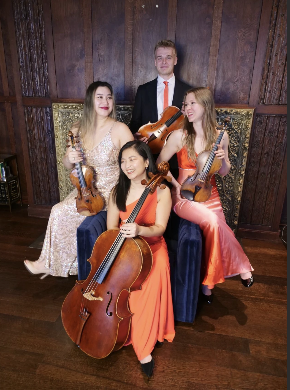
At 10:00 AM on May 18th, the American Ulysses String Quartet shared insights into the creation and performance of string quartets at the Concert Hall of the Central Conservatory of Music. The quartet comprises violinists Rhiannon Banerdt and Christina Bouey, cellist Mei-En Ho, and violist Peter Dudek, hailing from Canada and the United States, among other places. This event served as both a warm-up for the Ulysses Quartet's afternoon concert and a rich exchange centered on "The Performance and Creation of Modern Music."
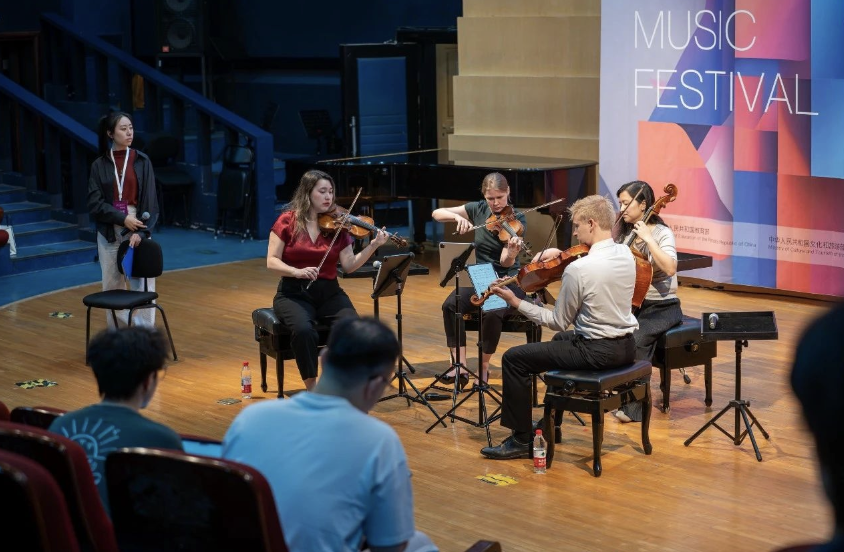
Topic 1: Why We Love Modern Music
The first topic of the event was why the quartet members love modern music. At the outset, an interesting scene unfolded: after the four performers took the stage, they began playing directly without introducing the piece to the audience. With large up-and-down movements of their bows, the audience heard refreshingly new sounds and was captivated by these slightly exaggerated motions. After the performance, second violinist Rhiannon Banerdt explained that they had just played a segment from the fourth movement of Caroline Shaw's Plan & Elevation, which was also on the program for their afternoon concert. Through playing this segment, Rhiannon hoped each of them could express why they love modern music.
Rhiannon spoke first, saying she likes modern music because it allows her to express and discover new ideas and feelings. At the same time, modern music is full of characteristics that pique audience curiosity, such as auditory obscurity or highly complex techniques. She is very interested in exploring these features, which is why she likes modern music.
Cellist Mei-En Ho then said she likes modern music because composers tend not to mark the scores too precisely regarding tempo, dynamics, or performance articulations. This requires performers to design and explore how to play the music themselves.
Violist Peter Dudek also shared his reasons for liking modern music. He believes that learning modern music is exciting because the development and innovation of music are necessary processes in its historical progression. For instance, while music from the Classical and Romantic periods already had some established norms, these norms are gradually broken in modern music. Therefore, modern music is a fresh experience for both performers and audiences.
First violinist and composer Christina Bouey elaborated on her reasons for liking modern music from both performance and compositional perspectives. On one hand, as a performer, modern music allows her to interact with composers from different countries and regions and their local cultures, just as her current opportunity to play works by Chinese composers in Beijing is a novel and interesting experience. On the other hand, as a composer, she hopes to continuously expand musical boundaries and express entirely new feelings, and modern music gives her this opportunity.
Topic 2: How Quartet Members Collaborate
After concluding the previous topic, the four performers moved on to the second topic: how quartet members collaborate. Before starting the discussion, they performed a segment from Gong Xiaoting's string quartet Dong Feng Ru Yun. The biggest highlight was how the sound of the "wind" was passed along through the alternation of the four parts. After the performance, to enhance the audience's direct understanding, they re-performed the section imitating the "wind sound."
Subsequently, Mei-En Ho and Rhiannon Banerdt both shared their unique insights. They said that the "wind sound" in the work intentionally highlights the polyphonic texture, thus requiring performers to find a balance between individualized techniques and the sound the work aims to convey. This necessitates mutual coordination and cooperation.
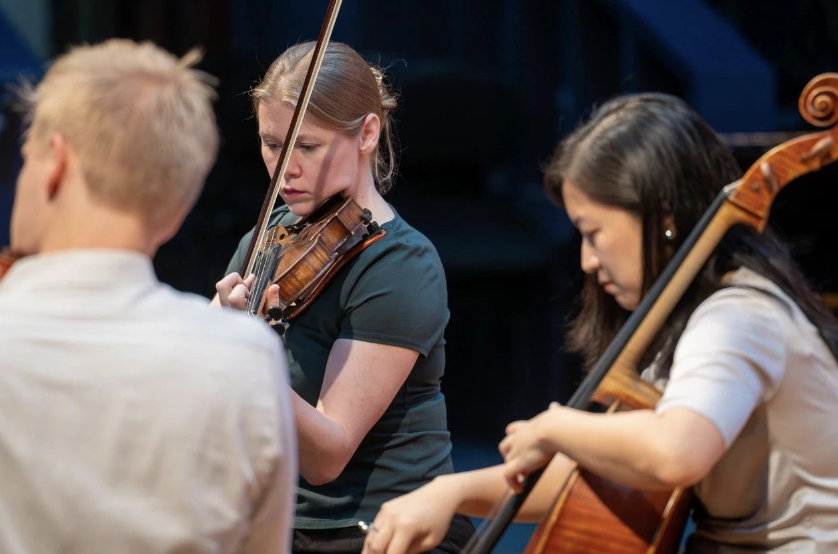
To better demonstrate collaboration among quartet members, the four performers then passionately played Chen Yangping's string quartet Fugue of Distance. The performers' continuous, long bows produced sharp, colliding sound effects, reminiscent of Penderecki's Threnody to the Victims of Hiroshima for strings. At this point, melody, rhythm, and harmony were no longer paramount; the composer was more focused on achieving special sound effects. Christina Bouey was the first to share her insight, believing that understanding the music's constant movement within a spectrum is a key principle in interpreting this piece. The performers discuss this among themselves, constantly expanding the musical territory to achieve the "distance" desired by the composer.
At Peter and Rhiannon's suggestion, they performed this segment again with even more exaggerated physical movements. Mei-En Ho then emphasized that such exaggerated movements were made to better grasp the rhythm and align with the beat. In this process, they need to anticipate each other's physical actions to avoid misalignments due to movements being too large or too small. The members' performance and Mei-En Ho's explanation vividly demonstrated their collaboration and coordination.
Topic 3: How to Balance Composer's Intent and Performer's Personal Expression
The third topic of the event was how quartet members find a balance between the composer's creative intent and their personal expression. As before, the members first played the opening section of Li Xinyan's string quartet Peach Blossom Spring. This work has a strong dramatic quality: after a light pizzicato opening, the strings suddenly shift to a rapid tremolo, and a tense, uneasy mood immediately replaces the previous quiet and serenity, creating a very stark emotional contrast.
After the performance, Mei-En Ho emphasized the importance of understanding the story behind the work for them to grasp its style. She uses her imagination to ponder the story's content, thereby giving the work greater room for interpretation while respecting the composer's intent. Rhiannon further mentioned the connection between the work's narrative and its dramatic nature. Handling this relationship well helps them better translate the drama into technical vocabulary, such as continuously building rapid tremolos. Both performers' sharing aimed to express the importance of understanding the work's creative background and the composer's intentions.
To help the audience better understand, they also played a segment from first violinist Christina Bouey's string quartet Soul. According to the composer, the inspiration for this piece came from a dream she had. Upon waking, she interpreted the dream's content by singing and recorded it on her phone for future creative use.
After playing the complete segment, the members then performed three different versions of the work's opening, each with a distinct style and vivid character: the first version was passionate and joyful; the second was gentle and stable; the third intentionally blended the emotions of the first two and imitated polyphony by having the four instrument parts enter sequentially. Through this demonstration, Christina Bouey wanted to show the audience that the first two openings were not adopted because the performers could not effectively control the composer's pre-set tempo and breathing points (phrasing nuances), while the third opening could retain the composer's intent while giving the performers more personal space.
Rhiannon also shared the challenges they encounter in collaboration. Even when the composer is one of their own, they still need to discuss constantly to find an interpretation that is comfortable for both the composer and the performers.
Topic 4: Challenges Faced in Performing Modern Music
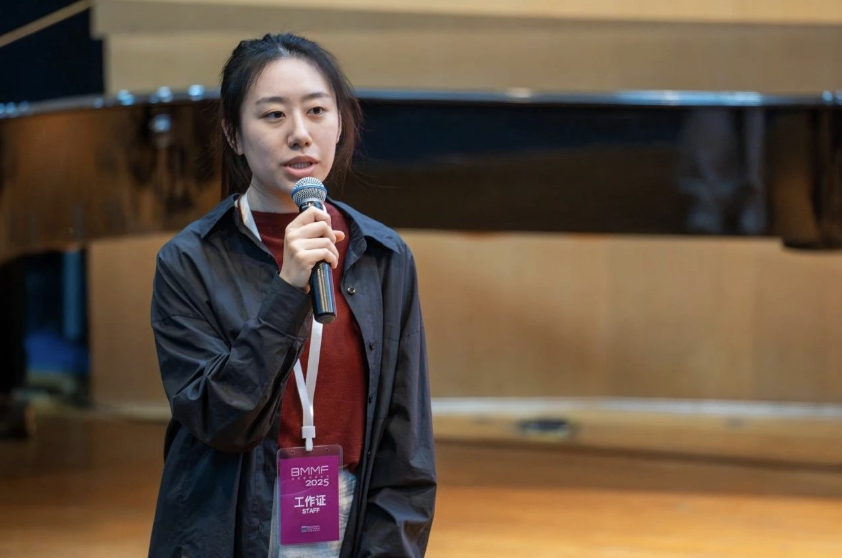
The final topic of the event was the challenges quartet members face when playing modern music. To introduce this topic, the four performers played some passages from the third piece of their afternoon concert—Seth Grosshandler's Dances for String Quartet. This work consists of five stylized dances from the Baroque period, with some new modern music elements added.
After the performance, Mei-En Ho spoke first, saying that one major difficulty they face is the diversity of choices, for example, in handling syncopation, tempo, and dynamics. If they cannot find a suitable approach, they are very likely to misinterpret the composer's intent. Therefore, before choosing an approach, they must determine what kind of sound they want.
Building on Mei-En Ho's point, Peter Dudek advocated for composers to attend rehearsals more often and communicate with performers. On one hand, playing in different venues results in different sound effects and sonic landscapes. Therefore, composers communicating with performers on-site can help performers better understand the sound the composer desires. On the other hand, he also emphasized that performers should offer a degree of personalized interpretation. He believes that overly prescriptive markings make works sound the same in every concert, whereas the charm of music lies in the fact that the same piece can be ever-changing with each performance.
At the end of the event, several audience members asked the quartet questions, expressing their enthusiasm and appreciation for the event. Through this activity, the Ulysses Quartet interpreted the meaning of "collaboration" in modern music, shared insights on balancing faithfulness to the score with individual expression, and explained each member's reasons for falling in love with modern music.
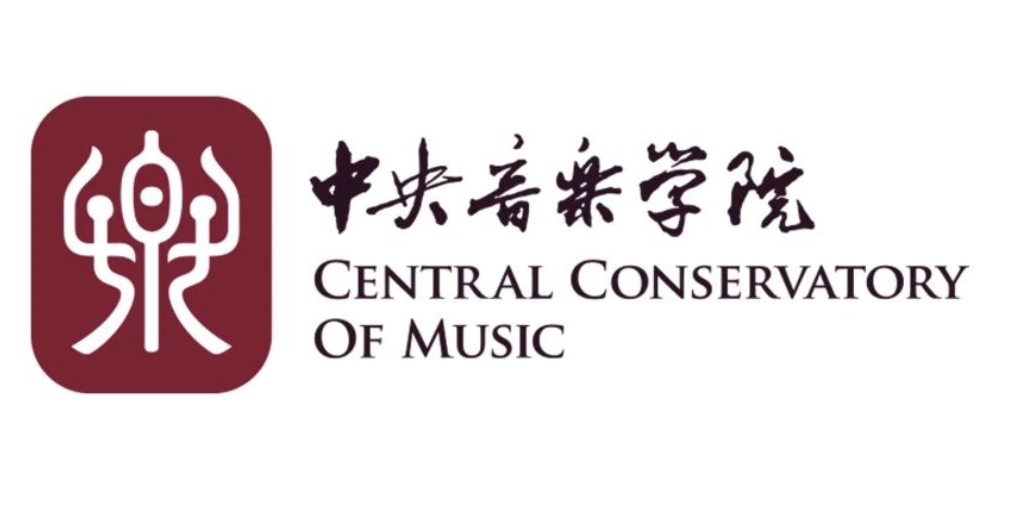

Executive Director | Guo Hai'ou
Executive Assistants | Zhang Shuhao, Yin Nan
Article Written by | Feng Binghua
Photography by | Zhang Yibin
